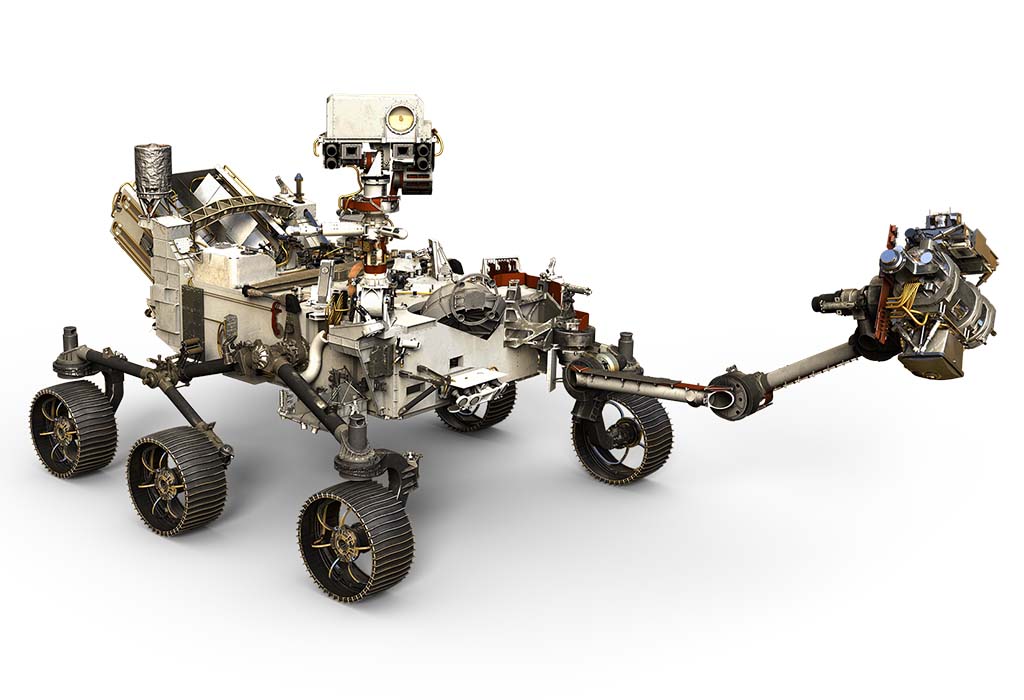Martians?
Although Mars is very different from Earth in terms of living conditions, it is the most similar to Earth out of all the planets in our solar system. In the search for life beyond Earth, it is seen as a pretty likely contender for harbouring some sort of life form.
Mars is cold though. The average temperature at the surface of the planet is around –63°C at the equator and gets as low as –140°C elsewhere. Although living things can survive on Earth under such extreme conditions, life as we know it is unlikely to thrive at these temperatures, because many of the chemical reactions that keep us alive would slow down drastically.
However, Mars may once have been much warmer than it is today. There is plenty of evidence that water once flowed on the surface of Mars, while now, there are just numerous dry river channels. Some of the water has since been lost to space and some of the carbon dioxide that was keeping the planet warm has been lost by reacting with the volcanic rocks at the surface of the planet. A wetter and hotter Mars may have been more conducive to life.
In August 1996, there was a lot of excitement, and then disappointment, when NASA scientists announced they had detected possible signs of life on Mars in a meteorite found in Antarctica. The meteorite, called ALH84001, contained microscopic chain structures that could be interpreted as bacteria-like forms.
These included carbonate rosettes—tiny blob-like formations similar to rosettes produced by bacteria in ponds on Earth as they metabolise minerals. The meteorite also contained an unusual mixture of chemical compounds known as polycyclic aromatic hydrocarbons (PAHs), which might have been produced as once-living organisms decomposed. There were also tiny crystals of magnetite and iron sulfide embedded in places where the carbonate rosettes had dissolved. Some bacteria on Earth manufacture similar crystals.
Heated discussion ensued, and it was eventually concluded that these were most likely not the fossilised remains of microbes and microbial activity, and that geological processes and contamination could account for all the observed ‘evidence’. So much for the Martian microbes.
The debate about life on Mars continued when methane was detected in the Martian atmosphere in 2003. The Curiosity rover has also now found methane, after not finding it in early experiments. This evidence is not conclusive, as although methane can be produced biologically, volcanic and geothermal processes also contribute to methane emissions.

Water is crucial for life on Earth. Although Mars has an abundance of geological structures that look like they could only have formed in the presence of running water, there’s not much of it there now. There’s frozen water at the poles and in the soils, liquid salty water just near the planet’s surface, and scientists have recently found evidence for some above-ground flowing liquid water, in the form of ‘recurring slope lineae’. These are flows of running salty water that appear as streaky lines on slopes in a few locations on Mars’s surface. Hydrated salt crystals (salts with water bound up in their crystal structure) have also been found near the streaky formations. The water is full of perchlorate salts, which help to lower its freezing point, enabling it to be liquid in the cold conditions of Mars.
Some of the briny waters at or near the surface may also contain enough dissolved oxygen to support aerobic microbes (things that require oxygen) and other simple life forms. It’s still not proof that life has existed on Mars in the past, but it gives scientists an even better idea of the kinds of conditions to look for in the search for life on other planets.

If there ever was life on Mars, it should still be there, somewhere. The European Space Agency’s ExoMars rover is due to land on the planet in 2021, where it will drill into the surface to hunt for evidence of ancient life. Meanwhile, NASA’s 2020 rover is also heading to Mars—but where should it land? NASA needs to send the rover to an easy, safe landing site … but the most likely place to find life would be far more adventurous, near volcanoes or sites that may have once been hot springs. Or perhaps near the recurring slope lineae—the intriguing flows of liquid water that could possibly be home to some sort of microbes. We’ll just have to wait and see.





